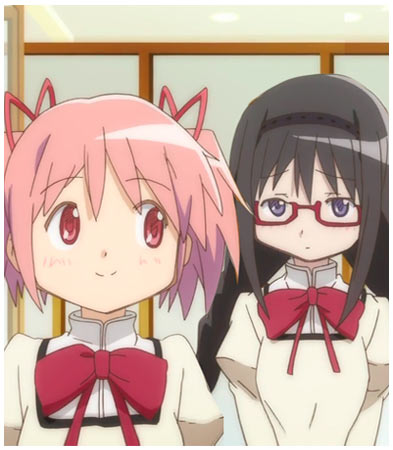It’s said in Japan that the U.S. is a “horizontal” society (in Japanese, yoko no shakai) while Japan is “vertical” (tate no shakai), supposedly due to the fact that life in the U.S. is merit-based whereas progression up the social ladder in Japan is more closely tied to age and seniority. I’m not sure that this is really the case anymore — the last decade or two radically changed the nature of some relationships here, especially in business — but there are certainly some ways that Japan seems “vertical” to me. One of the most obvious examples is the way relationships are organized into senpai (upperclassman, or senior member in a company or organization) and kohai (underclassman or junior member). While relationships among people the same age (dokyusei) are supposed to be neutral, they can sometimes have up/down elements, too. In episode ten of Madoka Magika, Madoka meets Homura for the “first” time, and her confident, self-assured manner sets the pace for their new relationship. “I’m Madoka Kaname. Please call me Madoka! So is it okay for me to call you Homura-chan?” The informality of using first names (only done with very close friends) lets the audience know that Madoka is the “leader” in the relationship now.(Trying my best to not give away any spoilers here. If you’re a Madoka fan and haven’t seen episode 10, what are you waiting for??)

Relationships in Japan often have a “vertical” element.














